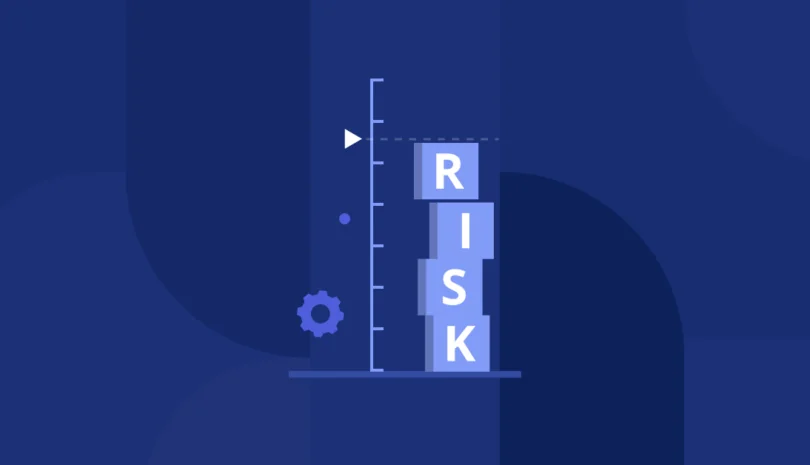Organizations rely on a growing network of third-party vendors to deliver everything from cloud infrastructure to payroll processing. These partners often have access to sensitive personal and business data, which introduces significant privacy risks. According to the 2024 Cost of a Data Breach Report by IBM and the Ponemon Institute, 51% of organizations experienced a data breach caused by a third party, yet only 36% believed their vendors would notify them in a timely manner.
That’s why vendor management isn’t just about checking boxes for compliance. It’s a strategic approach to protecting data, meeting regulatory expectations, and building lasting trust with customers and partners. A strong vendor management program helps you understand how data flows through your vendor ecosystem, identify weak spots early, and take action before issues escalate.
Consumers are increasingly aware of how businesses handle data. According to Cisco’s 2024 Data Privacy Benchmark Study, 98% of organizations said external privacy certifications are becoming important buying criteria.
This article explores why vendor management is so critical to protecting data privacy and how to build a resilient, risk-aware program that supports both compliance and long-term trust.
What Is Vendor Management?
Vendor management is the practice of selecting, onboarding, and continuously overseeing third-party service providers to ensure they meet your organization’s standards for privacy, security, and operational performance. It goes beyond procurement. A strong vendor management program helps establish expectations through contracts, assesses vendor risk over time, and provides ongoing visibility into how each partner handles sensitive data.
This oversight is especially important when vendors access or process personal information. Cloud service providers, marketing agencies, legal consultants, and IT support firms often interact with data that is subject to privacy regulations. Without the right safeguards in place, even trusted partners can become liabilities.
The goal of vendor management is to reduce that risk. By evaluating vendors before engagement and monitoring their practices throughout the relationship, organizations can catch potential issues early, prevent data mishandling, and strengthen their overall compliance posture. In a world where third-party relationships are unavoidable, managing them effectively is essential to protecting both your data and your reputation.
The Link Between Vendor Management and Data Privacy
Vendors often play a critical role in handling, storing, or processing personal data on behalf of your organization. But with that access comes risk. These third parties can become blind spots in your data protection strategy, especially if their security practices are less robust than your own. A vulnerability in one vendor’s system can have ripple effects that compromise your data, violate privacy regulations, and damage your reputation.
Regulators increasingly expect businesses to take responsibility not just for their internal controls, but also for how their vendors manage data. This accountability is built into laws like GDPR and CCPA, which require due diligence, formal contracts, and active monitoring of third-party providers.
Several high-profile breaches have highlighted the consequences of poor vendor oversight. In many of these cases, the originating business faced the legal, financial, and reputational fallout, even when the failure occurred outside their direct control.
Proactive vendor management reduces these risks by ensuring that your partners follow the same data privacy and security standards you do. It’s a key part of maintaining trust and staying ahead of regulatory expectations.
What Regulations Require Strong Vendor Data Privacy Practices?
Data privacy laws increasingly recognize that third-party vendors can introduce serious risks if not properly managed. As a result, many regulations now require businesses to monitor and enforce vendor compliance. If your vendors mishandle data, your organization can still be held responsible, legally and financially.
Here are some of the key frameworks that emphasize vendor oversight:
- General Data Protection Regulation (GDPR): Requires organizations to ensure that data processors provide adequate security measures. Article 28 mandates formal contracts, accountability for subprocessors, and the right to audit vendors.
- California Consumer Privacy Act (CCPA) and CPRA: Define strict roles for service providers. Businesses must include specific contract clauses that limit data use and require vendors to support consumer rights such as access, deletion, and opt-out.
- Digital Operational Resilience Act (DORA): Focuses on ICT and third-party risk in the financial sector. DORA mandates due diligence, risk assessments, and contractual controls over critical service providers.
- ISO/IEC 27001: A global security standard that includes detailed requirements for managing supplier relationships, particularly regarding access control, data integrity, and security testing.
By aligning with these regulations, businesses can reduce risk, strengthen trust, and ensure long-term compliance across their entire vendor ecosystem.
What Should Be Included in Vendor Contracts for Data Privacy?
Vendor contracts play a critical role in protecting your organization’s data and ensuring compliance with privacy regulations. These agreements should do more than outline services, they must define how personal data is handled, what standards apply, and how both parties are expected to respond to incidents.
A well-written contract creates clarity, reduces ambiguity, and sets the foundation for accountability. It also provides legal and operational leverage if a vendor fails to meet their obligations.
Here are five essential elements every vendor contract should include:
- Data protection requirements: Clearly specify technical safeguards like encryption, access controls, secure data transfer methods, and retention policies.
- Compliance obligations: Require the vendor to adhere to relevant privacy laws such as GDPR, CCPA/CPRA, HIPAA, or industry-specific frameworks.
- Breach response procedures: Define timelines for incident reporting (e.g., within 72 hours), along with roles and responsibilities during investigation and notification.
- Audit rights: Include the ability to review and assess the vendor’s data security practices, either directly or through third-party audits.
- Termination clauses: Outline steps for suspending or ending the agreement in case of non-compliance or repeated security failures.
These provisions help ensure vendors meet your standards and reduce your exposure to privacy-related risks.
How Often Should Businesses Assess Vendor Data Privacy Practices?
The frequency of vendor assessments should align with the level of risk each vendor poses. Not all vendors require the same level of scrutiny, so a one-size-fits-all approach can lead to wasted effort- or worse, overlooked risks.
Vendors that handle sensitive personal data, have system-level access, or support critical business functions should be assessed more frequently. For these high-risk vendors, continuous monitoring or quarterly reviews may be necessary. Lower-risk vendors, such as those with limited access or purely administrative roles, may only need annual assessments.
What matters most is that your approach is based on risk, not routine. Assessment schedules should reflect actual exposure, data sensitivity, and regulatory requirements.
Platforms like Panorays make this easier by automating assessments, scoring vendors based on risk factors, and sending alerts when a vendor’s posture changes. This allows you to adapt in real time and stay ahead of potential privacy threats.
What Should a Company Do If a Vendor Experiences a Data Breach?
When a vendor experiences a data breach, your organization must respond quickly and decisively. Start by gathering all available information about the incident. What data was compromised? Which systems were affected? How did the breach occur, and when was it discovered? Collaborate with the vendor to understand the root cause and whether any negligence or non-compliance contributed to the incident.
Next, evaluate your legal obligations. Depending on the data involved and your jurisdiction, you may need to notify regulators, affected customers, or other stakeholders within a specific timeframe. Failing to act within these legal windows can result in significant penalties and reputational harm.
It’s also critical to reassess the vendor’s access to your systems. If there is an ongoing risk, consider suspending or terminating their access while the issue is investigated. Review the vendor contract to determine whether the breach violates any terms.
After containment, conduct a thorough post-incident review. Use what you’ve learned to update internal procedures, strengthen vendor vetting, and improve breach response protocols.
Finally, document everything. A clear record of how you responded will support legal compliance, internal accountability, and future audits. Fast, transparent action can help preserve trust, even in a worst-case scenario.
Data Privacy Benefits of Effective Vendor Management
Strong vendor management offers more than just regulatory protection, it creates a framework for better business relationships and long-term resilience. When you take a proactive approach to managing how third parties handle personal data, you reduce uncertainty and reinforce your organization’s commitment to privacy.
Clear expectations, regular assessments, and well-structured contracts help ensure vendors are aligned with your data protection standards. This minimizes the chances of mishandling sensitive information and makes it easier to respond to incidents when they do occur.
Customers and partners want to know their data is in safe hands, even when it flows outside your organization. Effective vendor oversight shows that you take these responsibilities seriously. It builds trust with clients and regulators alike while demonstrating accountability and professionalism.
It also encourages a culture of transparency across your vendor ecosystem. When third parties understand that privacy is a shared responsibility, they’re more likely to invest in better practices, helping you reduce risk and strengthen data governance on all fronts.
Challenges in Vendor Management
Vendor management brings significant benefits, but it also comes with real challenges. One of the biggest is visibility. Many organizations struggle to understand how their vendors handle data behind the scenes, especially when those vendors rely on subcontractors or use complex infrastructure. Without insight into these processes, it’s difficult to assess risks accurately or verify compliance with privacy requirements.
Managing a large number of vendors across different teams or regions adds another layer of complexity. Each department may have its own standards, contracts, or monitoring practices, making it hard to maintain consistency. Meanwhile, privacy regulations continue to evolve across jurisdictions, requiring businesses to regularly update their agreements and internal procedures.
This dynamic environment can be difficult to navigate without the right tools and governance structure. Still, ignoring these challenges isn’t an option. Gaps in vendor oversight can lead to data breaches, legal exposure, and reputational damage. Taking the time to build a structured, adaptable program is essential for long-term success and regulatory compliance.
Tools and Technologies to Simplify Vendor Management
Managing dozens, or even hundreds, of vendors manually is not only time-consuming, it increases the risk of oversight and inconsistency. Spreadsheets and email threads can’t keep up with today’s complex privacy and compliance requirements. To stay on top of vendor relationships, organizations need purpose-built tools that bring clarity and control to the process.
Vendor risk management platforms like Panorays help automate assessments, flag high-risk vendors, and continuously monitor changes in security posture. This enables teams to act quickly when risks emerge and stay aligned with regulatory expectations. Automation also frees up internal resources and ensures a consistent, repeatable process.
Contract management systems are another essential piece, making it easier to track, update, and enforce privacy clauses across all vendor agreements. Cybersecurity tools can further enhance oversight by offering visibility into system access, data flow, and suspicious activity.
Choosing the right mix of technologies depends on your business size, industry, and compliance goals. But for any organization focused on data privacy, investing in the right tools is a smart step forward.
Vendor Management and Data Privacy Solutions
Vendor management is more than a compliance checkbox, it’s a foundational element of any effective data privacy strategy. When organizations take vendor oversight seriously, they gain more than regulatory peace of mind. They create a framework for trust, accountability, and long-term risk reduction.
By establishing clear expectations around data protection, enforcing privacy requirements through contracts, and leveraging tools that support automation and real-time monitoring, businesses can significantly reduce their exposure to third-party risk. This kind of proactive strategy ensures that vendors understand and meet your organization’s privacy standards from day one.
The impact goes beyond compliance. In industries where sensitive data drives business, such as finance, healthcare, or tech, a single vendor-related incident can jeopardize customer relationships and damage brand reputation. Effective vendor management helps protect what matters most: your data, your customers, and your credibility.
Ultimately, the right vendor management approach helps create a resilient ecosystem where data is handled responsibly across every touchpoint. It’s a smart investment in security and a strong signal of trust to all stakeholders.
Ready to take control of vendor data privacy? Panorays simplifies vendor management by automating assessments, monitoring third-party risk, and ensuring your vendors meet privacy and compliance standards. Build a stronger, more secure vendor ecosystem, without the manual effort. Book a personalized demo today.
Vendor Management and Data Privacy FAQs
-
Lack of proper oversight can lead to significant consequences, including data breaches, regulatory fines, and loss of customer trust. Vendors that mishandle personal data or fail to meet compliance requirements can expose your organization to legal and financial risks. When these issues involve high-risk vendors, the impact can escalate quickly and damage your reputation.
-
Vendor performance is typically evaluated using metrics such as compliance scores, response times to assessments, breach history, and how well they meet contractual obligations. Tracking these indicators helps you prioritize vendors based on risk and maintain accountability. Platforms like Panorays make this easier by centralizing these metrics and updating them in real time.
-
Automation streamlines key activities like sending assessments, collecting documentation, and flagging potential risks. It ensures consistency, saves time, and enables faster decision-making. With automated workflows and continuous monitoring, you can reduce manual workload and improve your ability to respond to changes in vendor risk, before they turn into bigger problems.



